ELITE 197
Russian Security and Paramilitary Forces since 1991
| MARK GALEOTTI | ILLUSTRATED BY JOHNNY SHUMATE |
Series editor Martin Windrow
CONTENTS
The historical background  From Soviet Union to Russian Federation, 1991 the proliferation of spetsgruppy
From Soviet Union to Russian Federation, 1991 the proliferation of spetsgruppy
Organization and equipment  Unit locations, by district
Unit locations, by district 
Transition from the KGB, and Putins reforms  Alpha counterterrorist unit: Afghanistan 197989 Moscow, 1991 & 1993 Chechnya
Alpha counterterrorist unit: Afghanistan 197989 Moscow, 1991 & 1993 Chechnya
Special Designation Detachments  Federal Narcotics Control Service (FSKN)
Federal Narcotics Control Service (FSKN)  Foreign Intelligence Service (SVR)
Foreign Intelligence Service (SVR)  Antipoaching units
Antipoaching units  Ministry of Emergency Situations (MChS)
Ministry of Emergency Situations (MChS)  Tax Police (NP)
Tax Police (NP)
Glossary of acronyms used in this text:
| BON | Brigada osobennogo naznacheniya Special Purpose Brigade (of Interior Troops) |
| FPS | Federalnaya pogranichnaya sluzhba Federal Border Service |
| FSB | Federalnaya sluzhba bezopasnosti Federal Security Service (formerly FSK) |
| FSIN | Federalnaya sluzhba ispolneniya nakazanii Federal Penitentiary Service (lit., Federal Service for the Execution of Punishment) |
| FSK | Federalnaya sluzhba kontrrazvedki Federal Counterintelligence Service (became FSB) |
| FSKN | Federalnaya sluzhba po kontrolyu za oborotom narkotikov Federal Narcotics Control Service |
| FSO | Federalnaya sluzhba okhrany Federal Protection Service |
| GNR | Gruppa nemedlennogo reagirovaniya Rapid Response Group (of police) |
| GUVD | Glavnoe upravlenie vnutrennykh del Main Internal Affairs Directorate (a major city police command) |
| KSN | Komanda spetsialnogo naznacheniya Special Purpose Team (of police) |
| MUR | Moskovskii ugolovnyi rozysk Moscow Criminal Intelligence (of Moscow GUVD) |
| MVD | Ministerstvo vnutrennykh del Ministry of Internal Affairs |
| NP | Nalogovaya politsiya Tax Police |
| OBrON | Otdelnaya brigada osobennogo naznacheniya Independent Special Purpose Brigade (of Interior Troops) |
| ODON | Otdelnaya diviziya osobennogo naznacheniya Independent Special Purpose Division (of Interior Troops) |
| OMON | Otryad mobilnyi osobennogo naznacheniya Special Purpose Mobile Unit (of police) |
| OMSN | Otryad mobilnyi spetsialnogo naznacheniya Special Purpose Unit (of police) |
| Opnaz | Operativnogo naznacheniya Operational Purpose (Interior Troops) |
| OSN | Otryad spetsialnogo naznacheniya Special Purpose Detachment (of Interior Troops) |
| PO | Pogranichnyi okrug border district (also pogranokrug) |
| PPS | Patrulno-postovaya sluzhba Patrol-Guard Service (of police) |
| PV | Pogranichnye voiska Border Troops |
| RSN | Rota spetsialnogo naznacheniya Special Purpose Company (of Interior Troops) |
| SBP | Sluzhba bezopasnosti prezidenta Presidential Security Service |
| SKRF | Sledstvennyi komitet RF Investigative Committee, Russian Federation |
| SMBP | Spetsialnyi motorizovannyi batalon politsii Special Motorized Police Battalion (of Interior Troops) |
| SOBR | Spetsialnyi otryad bystrogo reagirovaniya Special Rapid Response Detachment (of police) |
| Spetsgruppa | General term for a special forces group (plural, spetsgruppy) |
| Spetsnaz | Spetsialnogo naznacheniya Special Purpose, i.e. special forces |
| TsSN | Tsentr spetsialnogo naznacheniya Special Purpose Center |
| UVD | Upravlenie vnutrennykh del Internal Affairs Directorate (local police command) |
| UVO | Upravlenie vnevedomstvennoi okhrany Extradepartmental Guard Directorate (of police Okhrana) |
| UVO | Upravlenie vnutrennei okhrany Internal Protection Directorate (of MVD sometimes also Vokhr) |
| VOkhr | Vnutrennyaya okhrana Internal Security |
| VP | Voennaya politsiya Military Police |
| VV | Vnutrennye voiska- Interior Troops |
RUSSIAN SECURITY AND PARAMILITARY FORCES SINCE 1991
INTRODUCTION
Russia has a tradition of violent politics, in which internal security forces are often crucial: as the suppressors of revolution, the eyes and strong right hands of the state, and the agents of factional politics both as king-makers, and king-breakers. This is an age-old tradition, dating back to the custom of every medieval Rus prince to maintain his druzhina or armed personal retinue, as well as to the streltsy (shooters) raised by Ivan the Terrible in the 16th century. These latter were simultaneously a war-fighting force, the palace guard, the Moscow police, and even the fire brigade. Later, the tsars would not only form the uniformed Special Corps of Gendarmes to suppress dissent, but would also rely on regiments of Cossacks to put down riots and rebellions. The Bolshevik Revolution of 1917 did not end the tendency of Russias rulers to raise and retain numerous, competing internal security forces; if anything, leaders became all the more concerned about the need to maintain a balance of power between rival praetorians in order to exclude the danger of coups. The Bolshevik leader Lenin was initially guarded by a special unit of Latvian riflemen, but in due course the Red Army, political police, and regular police would form a stable (if mutually suspicious) security structure in the capital.
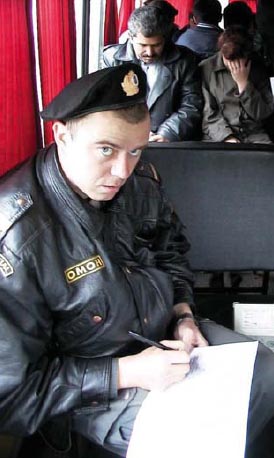
Police junior NCO processing prisoners inside a bus after a mass arrest in Chechnya in 1999; his black beret and the right chest tab identify OMON. These riot units affected the black leather jacket for most of the 1990s and into the 2000s, but it is now rarely seen in large cities and is, indeed, something of the mark of a provincial cop. The English-language shoulder title, probably TEAM SPECIAL, is an affectation typical of the 1990s. (Northfoto/Shutterstock.com)
Russias paramilitary and security forces have always tended to be closer to the political leadership than the regular military. Indeed, their job was often to keep the soldiers in line a technique perfected by Stalin, who unleashed the NKVD secret police on the Red Army in the purges of 1937. Their role has tended to be explicitly political, making them the instruments of the government (or powerful figures within it) rather than simple servants of any legal or constitutional order. Having been its most vicious defenders, however, it was, ironically, their actions and inactions that proved pivotal in the downfall of the Soviet Union. In August 1991, Communist Party hardliners launched a political coup against President Gorbachev during his absence from Moscow. However, the refusal of members of the KGBs Alpha counterterrorist commando force to obey their orders and spearhead an attack on the parliamentary building used as a headquarters by maverick Russian leader Boris Yeltsin spelled the beginning of the end of the coup. In September 1993, however, after the dissolution of the USSR, security troops of the Ministry of Internal Affairs (MVD) would assault that same White House, this time on Yeltsins orders, to forcibly close down the parliament that was defying him.
Next page



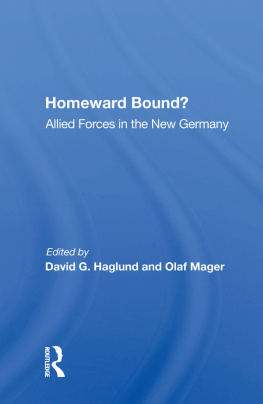
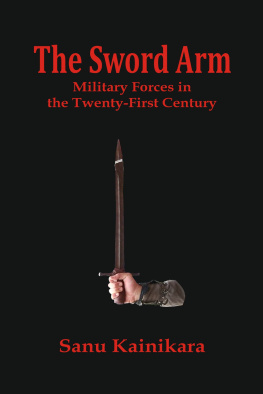
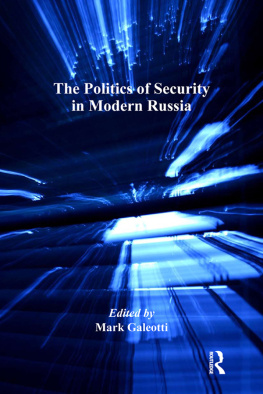
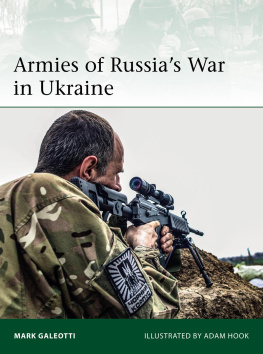
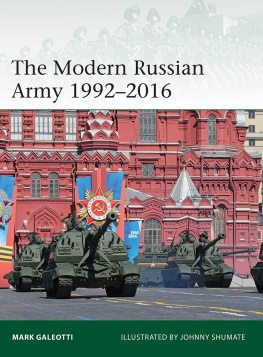
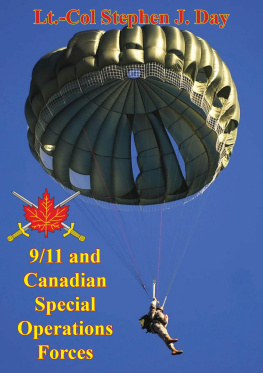
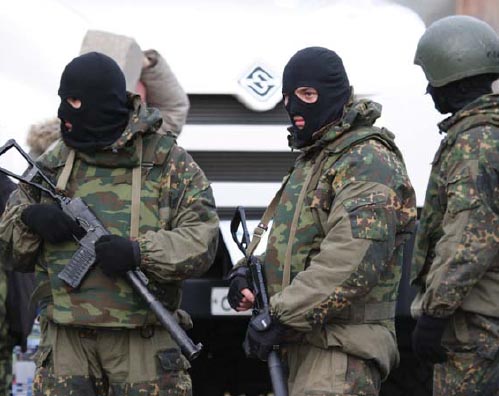
 From Soviet Union to Russian Federation, 1991 the proliferation of spetsgruppy
From Soviet Union to Russian Federation, 1991 the proliferation of spetsgruppy